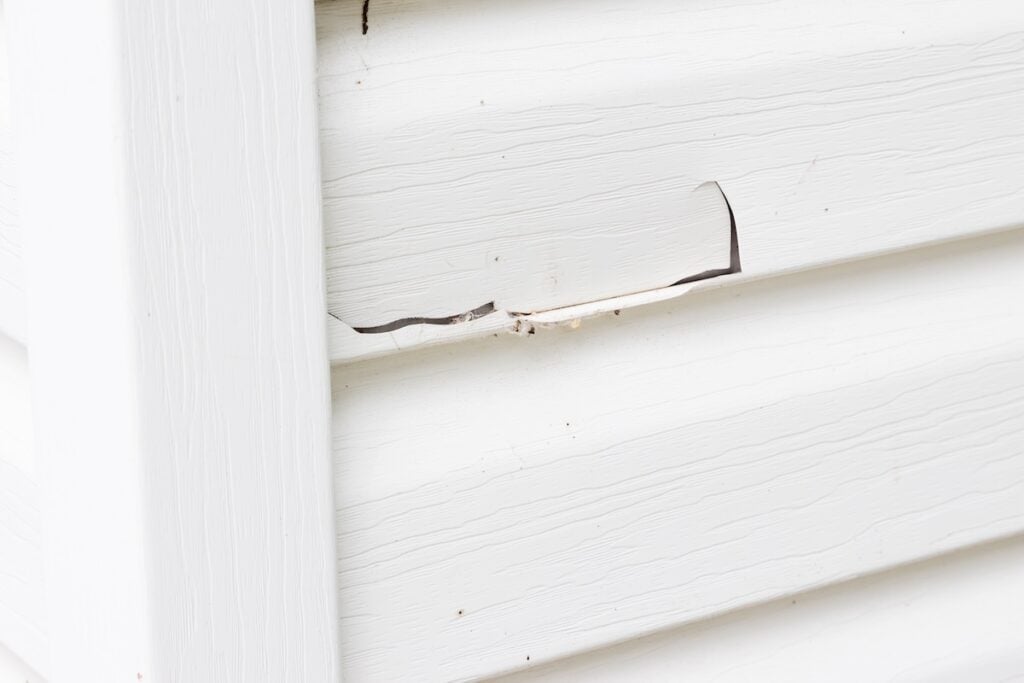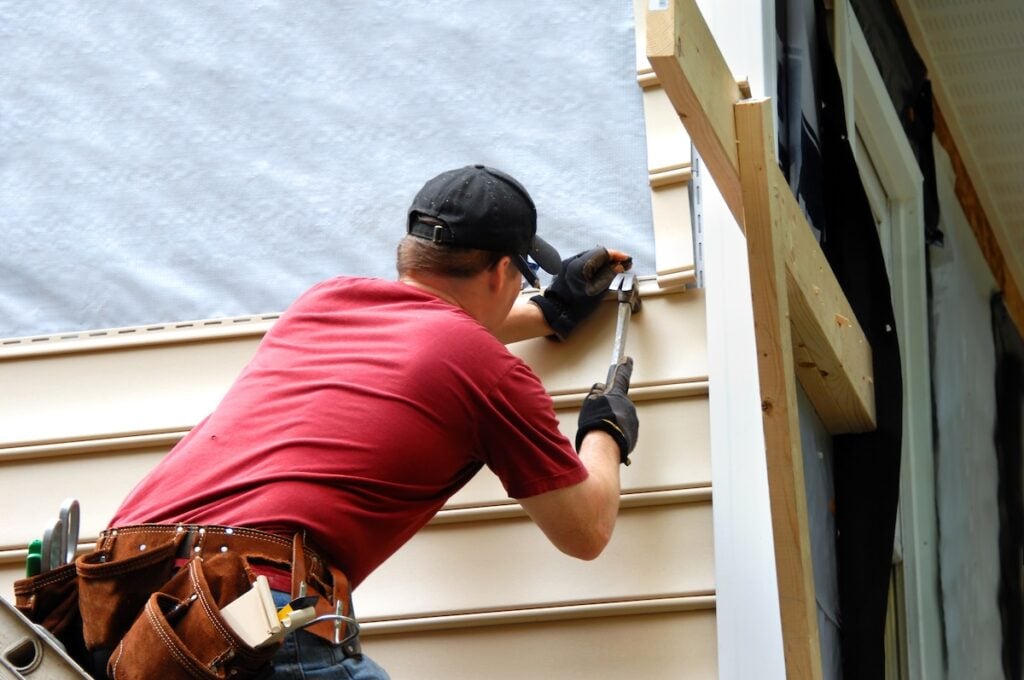Siding Repair: 7 Signs Of Damage & Fixes
Siding repair is something most homeowners will eventually face, especially as siding ages or endures repeated exposure to the elements. While siding is designed to protect your home and boost curb appeal, even minor damage can lead to bigger issues if left unaddressed.
- Water damage risk: Damaged siding can allow moisture into your walls, leading to mold and rot.
- Energy efficiency: Cracks or gaps in your siding can drive up heating and cooling costs.
- Home value: Well-maintained siding helps preserve your home’s resale value and appearance.
Let’s take a look at the most common signs that your siding needs attention—and how to fix each one effectively.
👉 Why Siding Matters
Your siding is more than just an exterior finish. It acts as a critical barrier between your home and the outside world, shielding it from weather, pests, and fluctuating temperatures.
Protection From the Elements
Siding helps keep rain, snow, and wind out of your home. When it’s damaged or worn, water can seep into the underlying structure, which may lead to costly repairs.
Insulation and Energy Efficiency
Cracked or warped siding can compromise your home’s ability to regulate temperature. This means your HVAC system has to work harder, raising your energy bills and reducing overall comfort.
Curb Appeal and Resale Value
Even if your siding isn’t structurally damaged, aesthetic issues like fading, stains, or warping can make your home look dated. Fresh siding—or timely repairs—can give your home a facelift and boost resale value.

⚠️ 7 Signs You Need Siding Repair (And What To Do)
Not all siding issues are immediately obvious. That’s why routine inspections are important. Here are seven clear signs your siding may need repair, plus solutions for each.
1. Cracks and Holes
- Why it matters: These openings allow moisture and pests to infiltrate your home’s walls.
- How to fix it: Small cracks can be caulked or patched. Larger holes may require replacing full siding panels.
2. Warping or Buckling
- Why it matters: Warped panels indicate moisture buildup or improper installation.
- How to fix it: Remove and replace warped boards, and inspect the wall behind for water damage.
3. Faded or Discolored Siding
- Why it matters: UV exposure and age cause fading, which reduces your home’s visual appeal.
- How to fix it: In some cases, a professional cleaning helps. Otherwise, replacement may be the best option for long-term results.
4. Mold, Mildew, or Algae Growth
- Why it matters: Indicates moisture problems that can spread beneath your siding.
- How to fix it: Clean the affected area with a siding-safe solution. If growth returns quickly, you may need panel replacement or moisture barrier repairs.
5. Loose or Missing Panels
- Why it matters: This leaves your home exposed to wind, water, and insects.
- How to fix it: Reattach or replace loose or missing panels. Make sure underlying materials haven’t been compromised.
6. Increased Energy Bills
- Why it matters: Your siding may no longer be insulating properly, especially if it’s damaged or pulling away from the wall.
- How to fix it: Seal any gaps, add insulation behind the siding, or consider upgrading to more energy-efficient materials.
7. Peeling Paint Inside the Home
- Why it matters: Interior paint issues can be caused by water seeping through compromised siding.
- How to fix it: Repair or replace exterior panels, then repaint inside after ensuring the leak is resolved.
🪵 Popular Siding Repair Materials
The type of siding you have will influence the best repair approach. Some materials are easier to patch than others, while some require full panel or section replacement.

Vinyl Siding
Vinyl is durable, affordable, and easy to maintain, but it can crack in extreme temperatures or fade over time. It’s typically easy to replace a single damaged plank without disturbing surrounding sections.
Wood Siding
Wood siding is beautiful but vulnerable to rot, insects, and warping. Repairs usually involve replacing individual boards and resealing the surface.
Fiber Cement Siding
This composite material resists rot and fire but may crack if struck hard. Fiber cement panels are heavier, so repairs often require professional handling.
Aluminum Siding
Aluminum resists pests and moisture but can dent easily. Repairs may include reshaping minor dents or replacing panels for severe damage.
🛠️ DIY vs. Professional Siding Repair
Some minor siding repairs are DIY-friendly, while others are best left to professionals. Knowing where that line is can save you time, money, and frustration.
When You Can DIY
- Small cracks or nail holes: Can often be patched with caulk or filler.
- Loose panels: Sometimes reattach easily with the right tools and clips.
- Cleaning mold or stains: A siding-safe cleaner and soft-bristle brush may be all you need.
When To Call a Pro
- Widespread damage: If multiple areas are affected, professional repair ensures proper waterproofing and finish.
- Underlying moisture problems: A contractor can inspect for rot, mold, or insulation issues behind the siding.
- Matching materials: Professionals have access to matching styles and colors for seamless repairs.
👍 How To Prevent Future Siding Issues
Regular maintenance is the key to avoiding costly repairs down the line. These simple habits can help you stay ahead of siding damage.
- Annual inspections: Walk around your home and look for signs of damage, mold, or wear.
- Clean regularly: Use a garden hose or pressure washer on a low setting to remove dirt and algae.
- Keep landscaping trimmed: Shrubs and trees can trap moisture or scratch your siding.
- Seal and paint wood siding: Keep surfaces protected from moisture with fresh coats every few years.

🏠 Siding Repair: Keep Your Home Protected
Ignoring siding damage won’t make it go away—it will only make things worse. Catching issues early and taking the right steps to fix them helps protect your home’s structure, energy efficiency, and visual appeal.
One Way Roofing is here to help with everything from inspections to full siding repair and replacement. Our experienced team knows how to match materials, fix underlying issues, and make your home look like new again.
Think your siding may be damaged? Contact One Way Roofing today for a free inspection and personalized repair recommendations.

